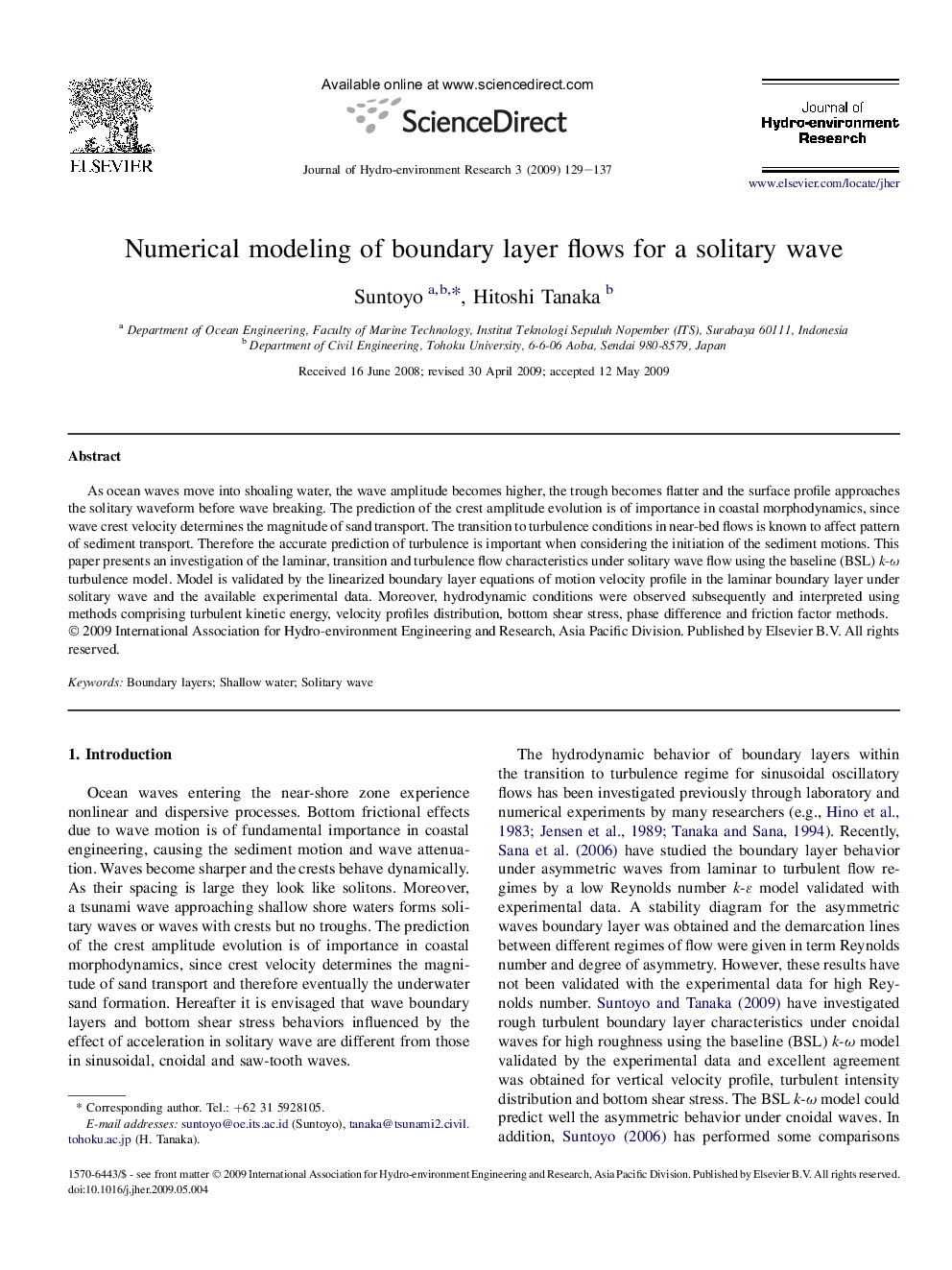| Article ID | Journal | Published Year | Pages | File Type |
|---|---|---|---|---|
| 4493980 | Journal of Hydro-environment Research | 2009 | 9 Pages |
As ocean waves move into shoaling water, the wave amplitude becomes higher, the trough becomes flatter and the surface profile approaches the solitary waveform before wave breaking. The prediction of the crest amplitude evolution is of importance in coastal morphodynamics, since wave crest velocity determines the magnitude of sand transport. The transition to turbulence conditions in near-bed flows is known to affect pattern of sediment transport. Therefore the accurate prediction of turbulence is important when considering the initiation of the sediment motions. This paper presents an investigation of the laminar, transition and turbulence flow characteristics under solitary wave flow using the baseline (BSL) k-ω turbulence model. Model is validated by the linearized boundary layer equations of motion velocity profile in the laminar boundary layer under solitary wave and the available experimental data. Moreover, hydrodynamic conditions were observed subsequently and interpreted using methods comprising turbulent kinetic energy, velocity profiles distribution, bottom shear stress, phase difference and friction factor methods.
